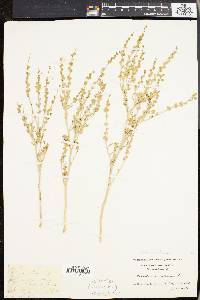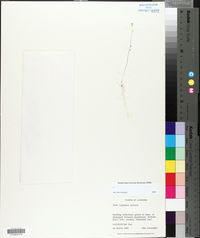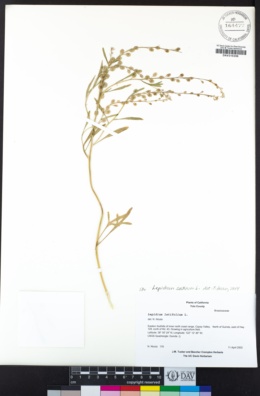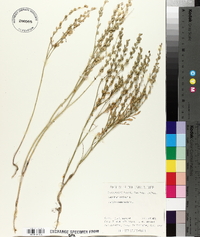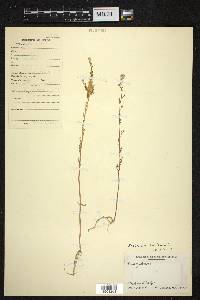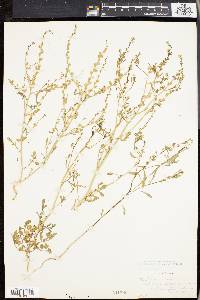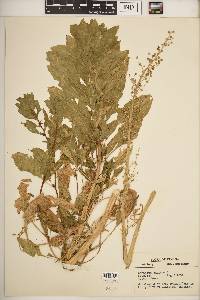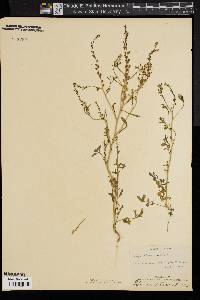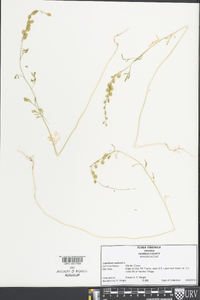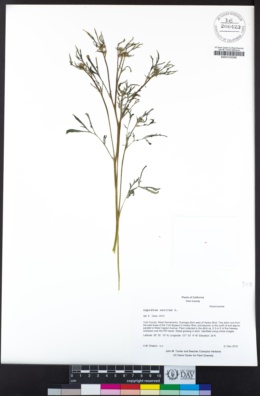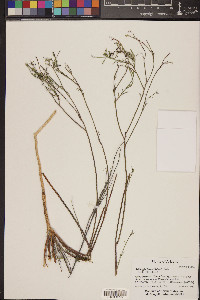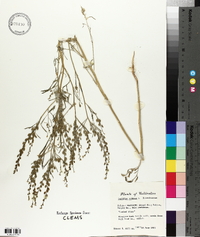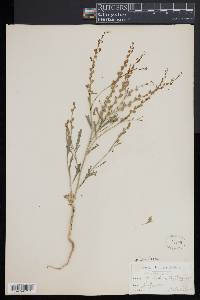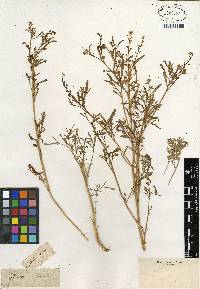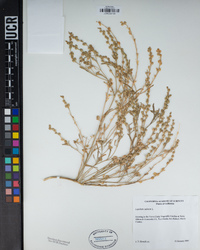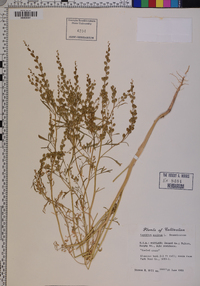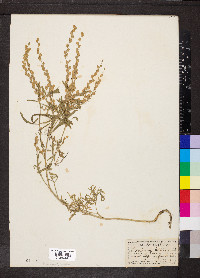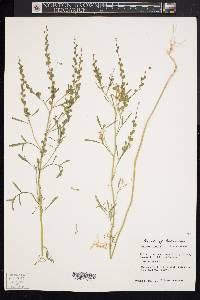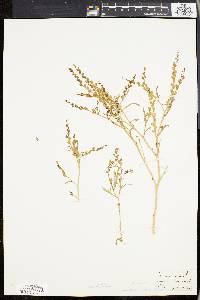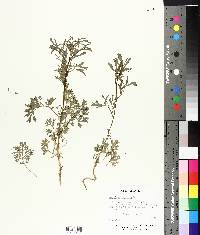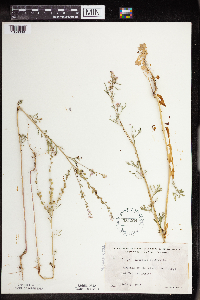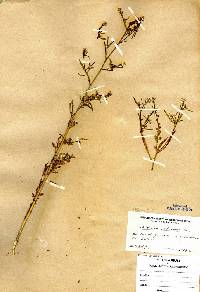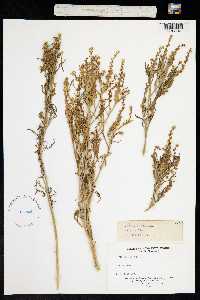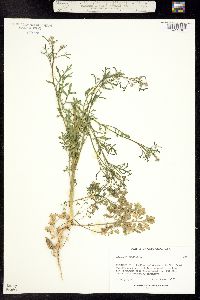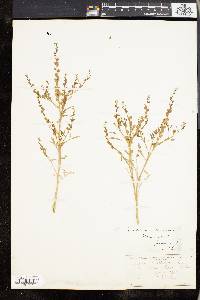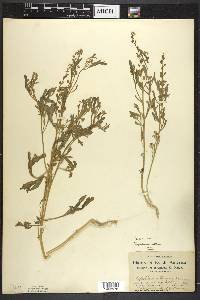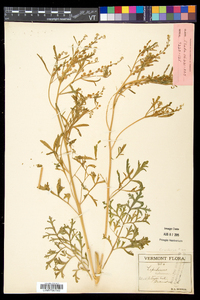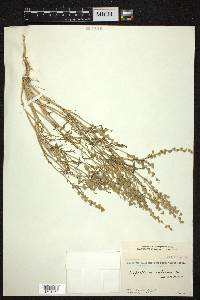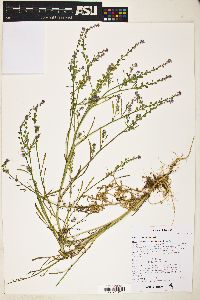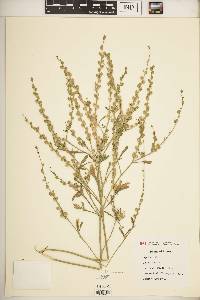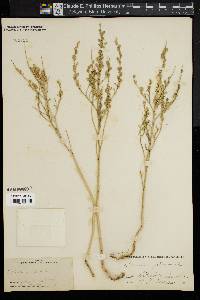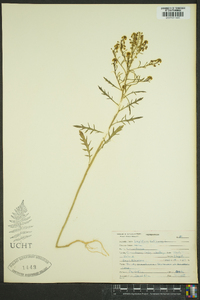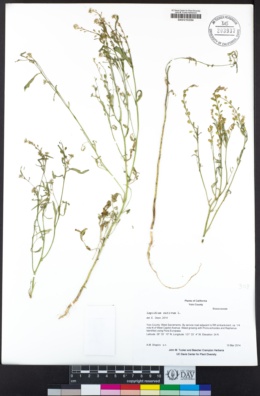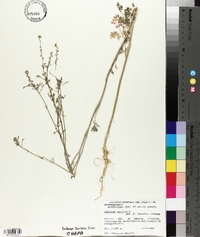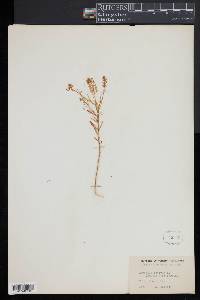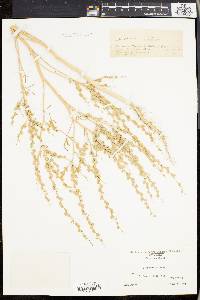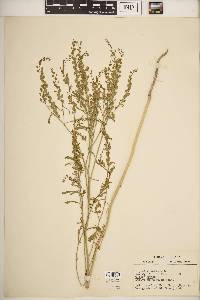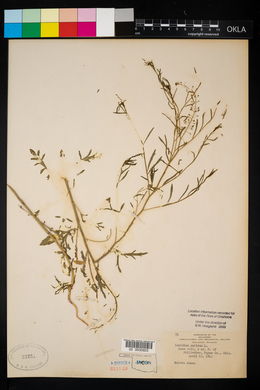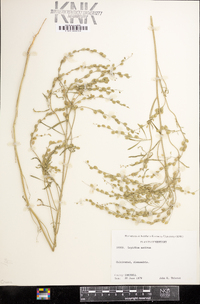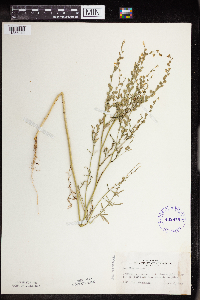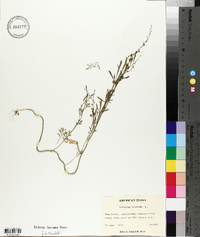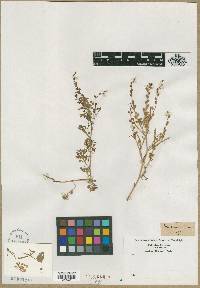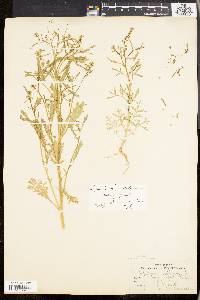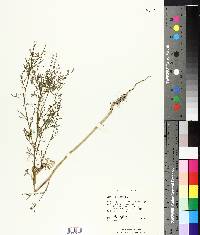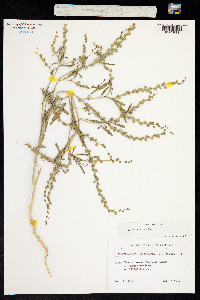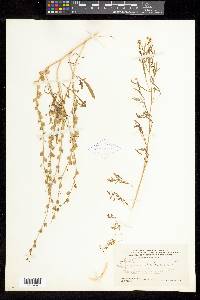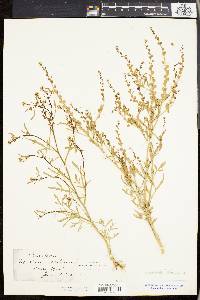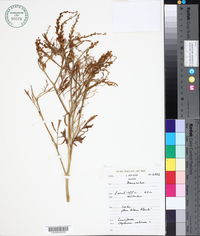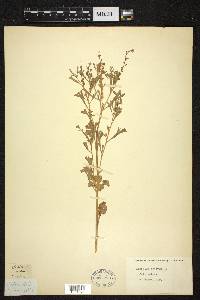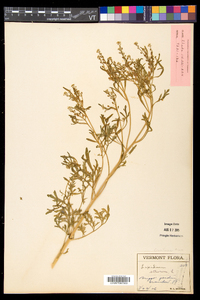Lepidium sativum
|
|
|
|
Family: Brassicaceae
Garden Pepperwort, more...gardencress pepperweed
|
Annuals; (often glaucous), usually glabrous, rarely sparsely pilose. Stems simple from base, erect, branched distally, (1-)2-8 (-10) dm. Basal leaves (withered by anthesis); not rosulate; petiole 1-4 cm; blade 1- or 2-pinnatifid or pinnatisect (lobes ovate to oblong), 2-8(-10) cm, margins (of lobes) entire or dentate. Cauline leaves petiolate; blade similar to basal, usually less divided, rarely undivided, (distal) often linear, bases not auriculate, margins entire. Racemes considerably elongated in fruit; rachis glabrous. Fruiting pedicels suberect to ascending, appressed to rachis, straight, (terete or slightly flattened), 1.5-4(-6) × 0.4-0.6 mm, glabrous. Flowers: sepals oblong-obovate, 1-1.8 × 0.5-0.8 mm; petals white or lavender, spatulate to obovate, 2-3.5(-4) × 0.7-1.4 mm, claw 1-1.4 mm; stamens 6; filaments (median pairs) 1.5-2 mm, (glabrous); anthers 0.4-0.5 mm. Fruits broadly ovate or ovate-oblong, (4-)5-6.4(-7) × 3-4.5 (-5.6) mm, apically broadly winged, apical notch 0.2 0.8 mm deep; valves thin, smooth, not veined, glabrous; style 0.1-0.5(-0.8) mm, usually included in, rarely subequaling, apical notch. Seeds (reddish brown), ovate-oblong, 2-2.7(-3) × 1-1.5 mm, (3-lobed). 2n = 16, 32. Flowering Apr-Aug. Gardens, old fields, vacant lots, disturbed areas, railroad embankments, waste grounds, roadsides, cultivated areas; introduced; Alta., B.C., Man., Nfld. and Labr. (Nfld.), N.W.T., N.S., Ont., P.E.I., Que., Sask.; Conn., Idaho, Iowa, Maine, Md., Mass., Mich., N.H., N.Y., Ohio, Oreg., Pa., R.I., Tenn., Wash., Wyo.; Europe; sw Asia; perhaps ne Africa; introduced also in South America (Argentina), Australia. Lepidium sativum is cultivated as a salad green and is sporadically naturalized, though never as an aggressive weed. It is seldom collected; the above range may be incomplete.
Annual herb 20 - 40 cm tall Stem: slender, upright, branched, with a more or less waxy coating (glaucous). Flowers: 2 mm wide, in branched clusters (raceme). Petals four, white to reddish white, twice as long as the sepals. Stamens six. Fruit: a pod, 5 - 7 mm long, two-thirds as wide, elliptic-oval, tips deeply notched. Basal leaves: once or twice pinnately divided, long-stalked. They wilt soon after flowering. Upper leaves: alternate, pinnately divided, stalkless or nearly so, smaller than basal leaves, with a more or less waxy coating (glaucous). The leaf segments are linear, oblong, or reverse lance-shaped. Similar species: Lepidium sativum is the only Lepidium species with pinnately divided upper stem leaves and 5 - 7 mm long fruit. Flowering: mid-June Habitat and ecology: Introduced from Europe. A rare escape from cultivation. Check for it in disturbed areas or waste ground. Occurence in the Chicago region: non-native Etymology: Lepidium comes from the Greek word lepis, meaning scale, which refers to the shape of the silicles. Sativum means cultivated. Author: The Morton Arboretum . Glabrous, ±glaucous annual 2-4 dm; lvs pinnately dissected into a few linear, oblong, or oblanceolate segments; fls 2 mm wide; stamens 6; fr elliptic-oval, 5-7 mm, two-thirds as wide, deeply notched; style half as long to nearly as long as the notch; mature pedicels erect or closely ascending, 2-4 mm; 2n=16, 24. Native probably of w. Asia, escaped from cult. especially in the ne. part of our range. Gleason, Henry A. & Cronquist, Arthur J. 1991. Manual of vascular plants of northeastern United States and adjacent Canada. lxxv + 910 pp. ©The New York Botanical Garden. All rights reserved. Used by permission. |

